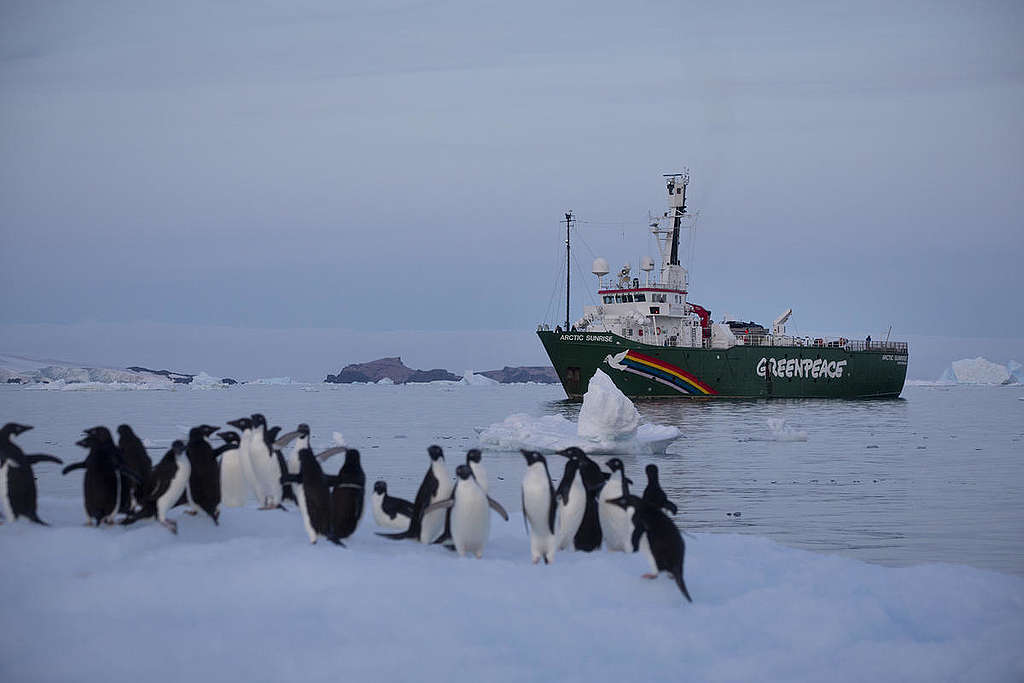“Our goal is to ensure the ability of the earth to nurture life in all its diversity.”, this is what Greenpeace states as its objective.
Greenpeace is an Amsterdam based NGO serving the environment. It aims to provide solutions for global environmental problems creatively and peacefully for a green and peaceful future.
Greenpeace was founded by Dorothy Stowe and Irving Stowe in 1971. It has offices in over 55 countries. Genetic Engineering, Environmental Abuses, Overhunting, are some of the topics that Greenpeace boycotts.

How Greenpeace was formed
Greenpeace initially was the name of a ship.
Around 1969, the United States planned to perform an underground nuclear weapon test in Amchitka, Alaska. Around 7000 people gathered there to oppose the plan as it had the potential to cause Earthquakes and Tsunami. The U.S executed the plan, anyway.
Though, no earthquake or tsunami occurred but the protestors became infuriated with the U.S. as the U.S. said they will detonate several such tests subsequently. They decided to protest for it by forming the “Don’t Make A Wave Committee” as this was the sign which protestors were holding while showing resistance against the first nuclear test. So the protestors eventually boarded a ship which was later named Greenpeace for the protest, which sailed to Amchitka to oppose the detonation of the 1971 nuclear test.
They had to return from mid-way due to U.S. coast guard ship confrontation. The U.S. again went with that detonation but later it was criticized and the plan eventually got dropped. Later, the group renamed themselves as Greenpeace foundation in 1972.
Currently, Greenpeace is Engaged in following Areas & Bringing a Change
In a few years, Greenpeace expanded its reach to several countries and raised their voice against other environmental issues such as contamination of ocean water from waste from industries, destructive fishing, deforestation, and on several other matters.
It comprises 27 national/regional organizations across Europe, The Americas, Asia, the Pacific, Africa, and a co-ordinating body as Greenpeace International. Greenpeace India, Greenpeace Southeast Asia, Greenpeace East Asia, Greenpeace Japan, Greenpeace USA are some of the Subsidiaries of Greenpeace International.
Greenpeace states that they do not accept grants from the government, corporations, or political parties as it may compromise their independence. They accept funding from individuals, private bodies, and grants from foundations and that too, only when it doesn’t compromise their independence.
They also publish their annual accounts report to let investors and the public know how the usage of funds took place. They are accountable to the public and investors.
National and Regional Organisations or NRO’s are the territory-specific subsidiaries of Greenpeace international. They are licensed by Greenpeace International to use Greenpeace’s name in their respective territory. NRO’s are responsible for implementing and carrying out operations that fall under a long term plan.
Forest campaign, Go Beyond Oil, Genetic Modified Organisms, Toxic waste, Save the Arctic are some of the campaigns held by Greenpeace. Greenpeace also has several ships in its possession; Ships have played an important role in its campaigns. Rainbow Warrior, MV Greenpeace, MV Arctic Sunrise, MV Esperanza, MV Solo, MV Sirius are some of the ships Greenpeace possesses.
Future Plans of Greenpeace
By 2020, Greenpeace aims to cut down the usage of coal by 30% and headed towards zero eventually. They aim to eat and farm sustainably for the wellbeing of our health and ecological wealth. They also aim to eradicate poverty and maintain equality among all genders. Being reliable on renewable sources of energy is another goal of Greenpeace.
They also try to maintain global climate change below 1.5 degrees celsius.
It has formulated a global energy scenario “Energy Revolution” where 80% of the world’s total energy is produced with renewables, and energy sector emissions will be decreased by 80% by 2050 as compared to that of 1990. It also aims to stop deforestation by 2020. Greenpeace also urges industrialized countries to cut their emissions at least 40% by 2020 and to give developing countries some substantial funding for building sustainable energy capacity to cope with the global warming consequences.
So Greenpeace has the potential to help the entire world to cope with the inevitable consequences of several human activities. It has reach and resources which other organizations lack. They have already brought the change and will continue to do so if they get support from the public and nations. Greenpeace does a noble job that others can’t even think of. Greenpeace not only plans but executes them in fullest of their potential.
You can also read- 10 startups which are solving the world’s most challenging problems.


